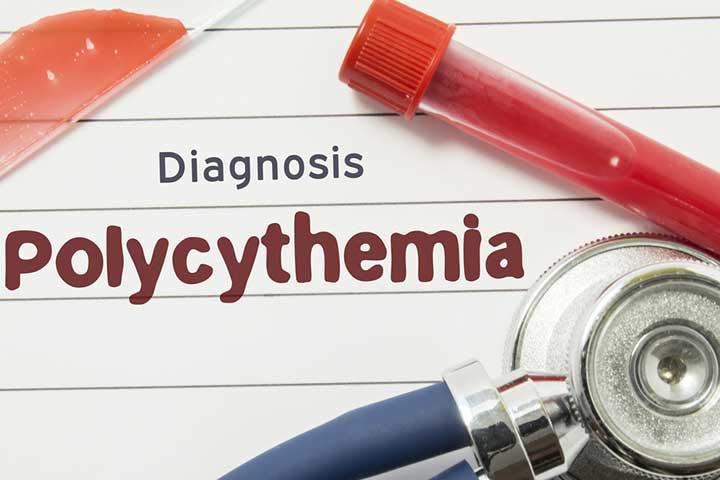Image: Shutterstock
Neonatal polycythemia is defined as either venous hematocrit or abnormally high hemoglobin levels above 65% and 22 g/dl, respectively. It is reported in 0.4% to 5% of healthy term neonates. The affected baby may not always show specific symptoms but occasionally have ruddy or dusky skin (1) (2).
In this condition, the excess red blood cells slow down or block blood flow into the tiny blood vessels. This may lead to tissue death due to lack of oxygen and affect the organs such as the kidneys, lungs, and brain (3). However, with timely intervention, this condition can be treated.
Keep reading as we discuss the causes, symptoms, and complications of polycythemia in babies.
Causes Of Polycythemia
Neonatal polycythemia could be caused by any of the following factors, some of which could be due to conditions that develop before birth (3).
- Inherited diseases or genetic disorders
- Delayed clamping of the umbilical cord
- Diabetic mother
- Low oxygen level in the fetus’s blood
- Twin-twin syndrome — When blood from one twin moves to the other
- Maternal smoking
- Mother lives at a high altitude
- Mother with high blood pressure
Symptoms Of Neonatal Polycythemia
In newborns, the red blood cell levels peak at the second hour of life compared to the cord blood levels. The levels then plateau between two to four hours of life and return to the cord blood levels at 12 to 18 hours of life. It is essential to observe any changes, and the postnatal screening should be done carefully and at the right time (4).
The symptoms of neonatal polycythemia may vary from baby to baby, and in some, it can be asymptomatic. The common symptoms of polycythemia include (3)
Diagnosis Of Polycythemia
Your child’s doctor would observe the symptoms and order the following tests (3).
- Hematocrit to count the number of red blood cells
- Oxygen level test in the blood
- Blood sugar test
- Creatinine test
- Urinalysis
- Jaundice test
Once the doctor determines polycythemia in your baby, the treatment will be initiated.
Treatment For Polycythemia
The treatment for polycythemia is done in two ways for symptomatic and asymptomatic polycythemia (1):
- Conservative management with rehydration
- Partial exchange transfusion (PET)
For asymptomatic infants with a red blood cell percentage of 60%–70%, conservative treatment with rehydration (increasing the fluid intake) is often sufficient.
Prognosis Of Polycythemia
Babies tend to respond positively to the treatment, and good results are seen in infants who receive treatment in the case of severe conditions.
Possible Complications Of Polycythemia
The common complications caused by polycythemia include:
- Necrosis of the intestinal tissues
- Diminishing fine motor skills
- Kidney failure
- Strokes
- Seizures
Prevention Of Polycythemia
The prevention of polycythemia depends on the underlying cause. Studies suggest that early cord clamping and holding the baby at the level of introitus at the time of delivery might help prevent polycythemia. However, there are no significant statistical evidence to support this (4).
Polycythemia is a rare blood disorder found in newborns. It can be treated if the symptoms are identified early on. Infants born with this complication would return to normal after the treatment. However, if the polycythemia is due to underlying conditions such as genetic disorders or if the pregnancy was high risk and the mother has hypertension or diabetes, it is important to screen the baby for polycythemia.

